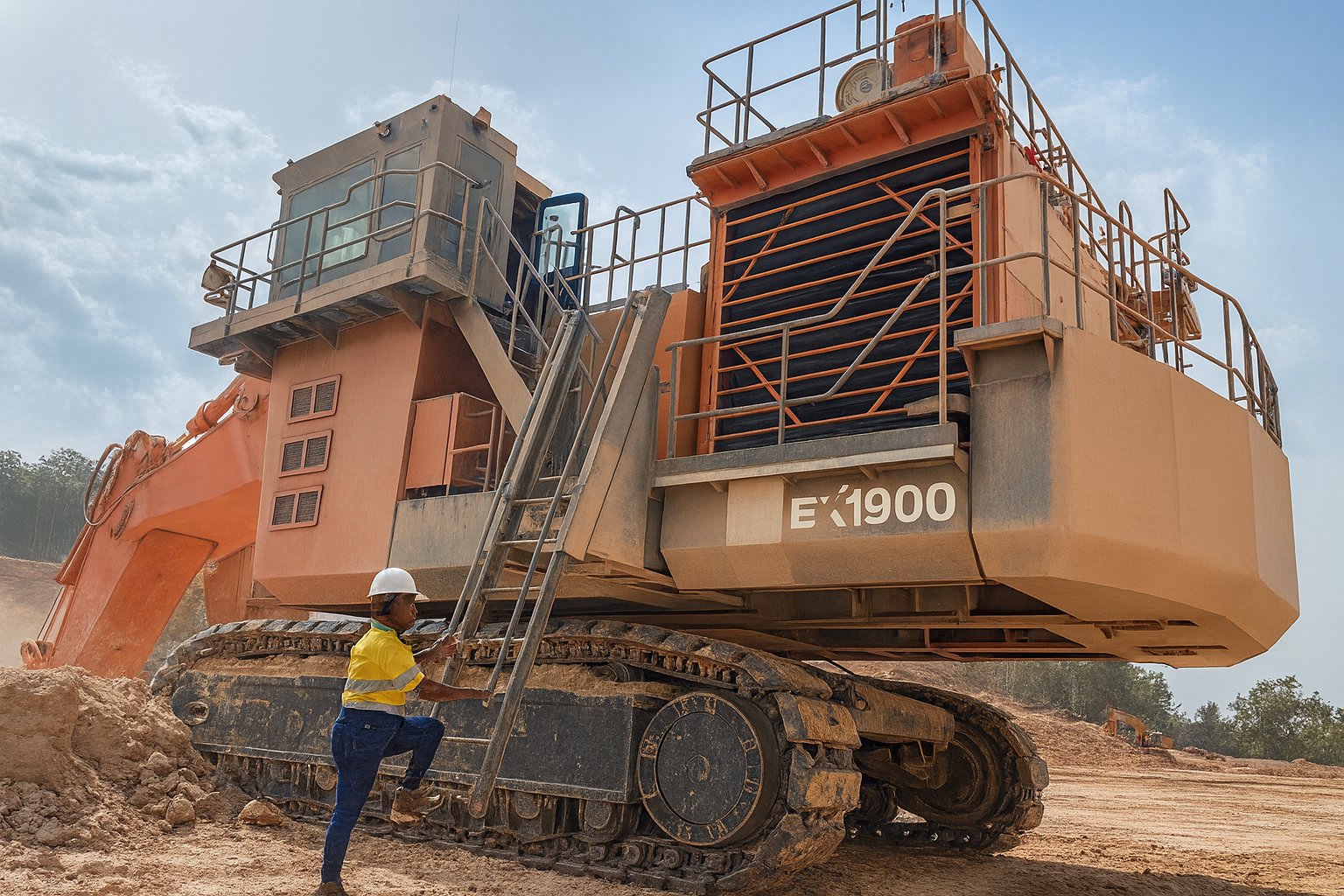
“As is typical of First Quantum, the project is doing very well and is progressing on-time and to budget.” Those were the words of John Gladston, Trident Resource Optimisation Manager, when we spoke during the summer of last year. The project he was referring to was of course the Trident project, the largest single project investment in Zambian history.
Now with 2014 well under way I find myself receiving an update on the project from Deputy General Manager, Tristan Pascall, and the message is very much the same. “The dry season that runs from March to around November in Zambia presented us with a major opportunity to leap ahead with our activities,” he says. “Come the end of December the project was at approximately 74 percent completion and that matches up with our schedule and our budget very well.”
Located almost 150 kilometres west of Solwezi in north-west Zambia and containing five mining licences over some 950 square kilometres, the Trident project encompasses both the Sentinel low grade copper mine and the Enterprise nickel mine. The Sentinel processing facility of the former will have a target throughput rate of approximately 55 million tonnes per annum of ore at an average grade of 0.5 percent copper. It is estimated that the mine will ultimately provide an annual production rate of around 280,000 up to 300,000 tonnes of copper, with its mine life estimated to be in excess of 15 years, and with possibilities to increase with future successful brownfield exploration.
A strong year of productivity in 2013 has seen the company reach a point where it has now placed some 96,500 cubic metres of concrete and put up around 9,100 tonnes of steel across the project site. At the end of December more than 13.4 million man-hours had been completed on the project, against a lost time incident (LTI) rate of 0.06.
The mining fleet at Sentinel has come along leaps and bounds in the last six to twelve months with the first truck, a 250 tonne capacity 860E Komatsu vehicle, receiving its first payload. The first 330 tonne 960E Komatsu truck was recently rolled into the completed fleet maintenance shed as well. Similarly a Komatsu PC5500 unit, the first of three units, has been released for work and the first of three CAT/Bucyrus 7495 is close to commissioning. A number of other important parts of the fleet have and continue to be delivered on a daily base from First Quantum’s contractors and suppliers.
Meanwhile, from a construction perspective, work on Sentinel’s second two trains of 40 foot diameter by 26 foot length (28MW) SAG and 28 foot diameter by 44 foot length (22MW) ball mills continue to gather pace with the Gearless Motor Drive windings recently installed within SAG mill 2, whilst rubber lining of ball mill 1 is now underway. The company has also commissioned the site’s four one megawatt power gen sets, which are now providing site reticulation of construction power. The units will also provide the permanent back up power facility for the site when Sentinel is connected to the state-owned power company ZESCO. Foundations for the first 19 towers for the 68 kilometre power line to connect Sentinel with the main ZESCO grid at the Lumwana mine have been installed, and the line is expected to be commissioned by June 2014.
In the housing area all 600 concrete slabs have been completed for employee housing, which will be offered to local staff for purchase under an affordable mortgage scheme. More than 60 of these houses are now occupied. In addition the team has completed roofing works on all 84 senior houses, and more than 30 houses and 40 singles quarters have been released for occupation
“Another major step forward for the project in the last year has been the receipt of full environmental approvals for all works outstanding at the main Sentinel project,” Pascall states. “In particular these approvals cover the sites’ process water dam, tailing dam and various resettlement areas. This is an important step forward for the project and means we can now set our sights on achieving the same approval for the Enterprise mine.”
As Business Excellence has covered previously in some detail, First Quantum has fast-established itself as a hugely important contributor to the upward social development of Zambia and one that endeavours to highlight its own commitment to sustainability through actions as well as words.
“Today 4,700 people are employed at Sentinel, 82 percent of whom are Zambian,” Pascall continues. “Of these 3,800 local staff, roughly 1,700 come from the country’s North Western Province, with around 750 from the villages that lie on our doorstep. This underlines the impact the construction of the mine has had on local employment, while on a country-wide scale we remain one of the biggest tax payers, paying out more than $2 billion to the Zambian government in the time that we have been here.”
In addition to tax and revenue generation First Quantum is also one of the biggest contributors to corporate social responsibility initiatives in the country, investing in excess of $20 million on various entitlement and community upliftment programmes across the area surrounding the mine. “These programmes include the rebuilding of four rural health centres, the construction of a police station for the local force, two new schools and the renovation of the District General Hospital,” Pascall says. “We also continue to promote conservation farming and this work has seen local farmers successfully increasing their yields by up to 250 percent through better management and access to inputs such as lime and fertiliser.”
It was also during 2013, April to be exact, that First Quantum formally submitted its application for the area under construction around the mine site to be classed as a Multi-Facility Economic Zone. “In the time since then we have received some good initial feedback from government,” Pascall enthuses. “While such an initiative doesn’t benefit the mine directly as such, what we want it to do is encourage people to come in and invest in this region, so it is really about promoting local procurement and local business development. This application continues to move forward and we excitedly await the government’s next move.”
This all plays into First Quantum’s desire to leave behind a long-lasting positive legacy in the region that far exceeds its own presence and that of the mine site. “Our work here is far from over and we have several other programmes that we are hopeful of getting under way in the near future, as well as some that are in their infancy,” Pascall enthuses. “Such projects include a Joint Forest Management initiative that we have recently launched with the local community to protect neighbouring forests and the valuable ecosystems they support. Once we begin to create revenue from Sentinel we anticipate that such programmes will expand further.”
For all of the company’s achievements in 2013, 2014 is poised to be an equally, if not more, momentous year for First Quantum and the Trident project as the operation moves towards commissioning and start-up. Upon start up the company expects to have the required power available from the single circuit 330kV power line to Lumwana which is adequate to run one of its two milling trains. Full power is then expected to be in place by the end of the year from a longer twin circuit 330kV power line via Mumbwa and that in itself will be a massive milestone for the project. The timing for full commercial production during 2015 will depend on the ramp up at Sentinel and that of the new smelter being built in Solwezi also by First Quantum.
“We are very happy with the progress we continue to make on the project,” Pascall says. “At a forecast capital cost of $1.9 billion, Sentinel’s capital cost per installed annual tonne of copper production is approximately $6,335 and that is world-leading compared to other projects under development in the industry.”
The market has indeed responded well to the developments being made by First Quantum, particularly now that much of its key operations staff are in place, including the Mine Manager, the Engineering Manager and the Training Superintendent for the incoming mining fleet operators. “We have assembled a quality team ready to take the project into commissioning and into its first years of operations,” Pascall concludes. “We feel we have the right people in place and they of course will continue to be supported by a fantastic Zambian workforce who have consistently shown themselves to be extremely productive, motivated and a great example to the rest of the country about what can be achieved here. We will now look to utilise this workforce as we move into a new phase of operations, one that I believe will highlight how well placed we are for the future.”
Written by Will Daynes, research by Richard Halfhide



 FirstQuantum-Africa-Mining-Feb14-Bro-s.pdf
FirstQuantum-Africa-Mining-Feb14-Bro-s.pdf








